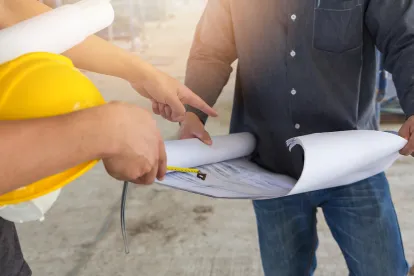Part 6: Miscellaneous Additional Changes to A201.
As final article of the series, Part 6 covers certain miscellaneous, but nonetheless, important changes in the A201 document which did not fit in the categories covered in Parts 1-5.
Contractor’s Construction Schedule. The revised Section 3.10.1 significantly expands upon the Contractor’s duty to provide scheduling information at the front end of the Project. Formerly, upon being awarded a contract, the Contractor was required to provide a construction schedule, with no further specificity except that it would not “exceed time limits under the Contract Documents.” Now, the scheduling information must (unless the language is modified) contain dates of commencement, interim milestone dates, substantial completion, apportionment of work by construction activity, and time required for each portion of the work. Providing this information will likely require far more due diligence at the contracting stage and may result in more contractually-enforceable scheduling deadlines than many contractors are used to giving. This is not a bad change, but parties need to carefully review the information provided so as to avoid conflict over, for example, failure to achieve an interim date, later.
Use and Reliance Upon Digital Data. The provisions of Sections 1.7 and 1.8 continue the evolution of contract language dealing with the transmission of digital data. Formerly, Section 1.7 obligated the parties to “endeavor” to establish protocols for the transmission of such data. The new provision now requires an agreement upon such protocols and specifically adopts AIA Document E203 as the vehicle for doing so. Section 1.8, in turn, provides that a party’s reliance upon BIM data in the absence of E203, or some other agreement upon protocols, is at the “relying party’s sole risk and without liability to the other party.” The risk here is simply too great to not ensure careful discussion of the protocols at the negotiating stage.
Liability for IP Infringement. An important revision was made to Section 3.17, which addresses a Contractor’s liability to defend and hold harmless the Owner and Architect against claims that the Contractor’s work infringed the intellectual property (i.e., patents) of others. The exceptions to the Contractor’s liability are in circumstances where the protected design, product or process: 1) was required by the Contract Documents; 2) was contained (in the case of copyright violations) in the Plans and Specifications; or 3) in the 2007 version, where “the Contractor has reason to believe” that there would be a violation. The change made in 2017, related to the third exception only, is to replace the subjective “reason to believe” language with a more objective standard, namely, where the violation “is discovered by, or made known to, the Contractor.” This actual knowledge standard appears to lighten the risk burden for the Contractor. Though perhaps subtle, this can be interpreted as a major shifting of risk. For any parties who have concerns over potential IP infringement, further negotiations as to exactly what standard applies may be necessary.
Hazardous Materials. Surprisingly few modifications were made to the provisions of Article 10, which deal with hazardous materials. This is a testament to the fact that the industry appears satisfied with how risk was allocated in prior versions of A201. One curious change was the one word modification in Section 10.3.6, dealing with the Owner’s obligations to the Contractor in regard to remediation costs not brought about by Contractor negligence. Formerly, the Owner was required to “indemnify” the Contractor for such costs. The 2017 version replaces the word “indemnify” with the word “reimburse.” Perhaps this change merely splits hairs, but arguments can easily be made that one word is less inclusive than the other. Until this definitional matter gets flushed out through experience under the new document, it would probably be wise to discuss the exact scope of the Contractor’s obligation at the negotiation table.
Variation in Estimated Quantities (VEQ). New Section 9.1.2 deals with circumstances in which unit pricing is used, but the actual number of units varies significantly from the quantity estimated when the unit prices were determined. For example, when the costs to mobilize equipment and machinery needed to excavate rock can be spread over a far greater quantity of rock, the unit cost per ton of rock removal could be far less. In such cases, Section 9.1.2 provides that if the unanticipated changes in quantity (either up or down) would cause “substantial inequity” to either the Owner or the Contractor, the unit prices “shall be equitably adjusted.” This is not a new idea; in fact, substantially similar language existed in the 2007 version as Section 7.3.4, which deals with Construction Change Directives. The significance of the modification lies in the fact that the provision has been moved from Section 7.3.4, which only applied in an Owner-directed change scenario, to Article 9, which contains the provisions on Contract Sum and Payment generally. This suggests that the circumstances in which an equitable adjustment will be required under the new document may be far more expansive than simply those brought about by Owner-directed changes. This should not be a problem because it equally protects both parties. Nonetheless, recognizing that the relocation of the provision makes its application more expansive is important to assess cost and risk at the front end of a project.
In addition to the above specific provisions, many other negotiation considerations may be relevant, depending on the unique circumstances of each project. If you have any questions about the new provisions, or would like to discuss negotiation options for your project, please contact your Davis & Kuelthau attorney or the author noted above.
Part 3: 2017 AIA Contract Document Series: Revisions to the AIA Core Contract Documents




 />i
/>i

